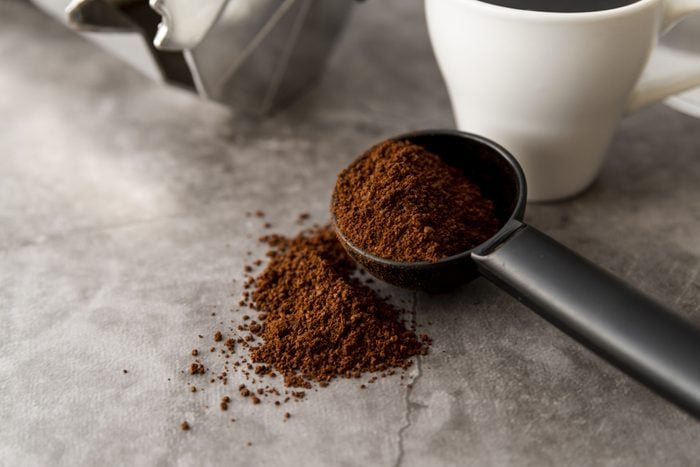
Clever uses for coffee grounds
Wondering if you can give all those used coffee grounds another purpose after making a fresh pot? If so, you’re smart to care about sustainable living. “Reusing, repurposing or finding any alternate applications for a product is always a better choice for the environment than throwing it in the trash,” says Natalie Lennick, environmental activist and founder of zero-waste hair-care brand Green Ablutions. Giving coffee grounds another life not only benefits you, it’s also a small act that’s beneficial for the planet.
You may have already heard about using coffee grounds for plants, but they’re way more versatile than that. Used coffee grounds can be used for kitchen hacks and in various other ways, so you can take advantage of this organic material more than once. You’ll likely be surprised at all the uses for coffee grounds, and they’re cost-effective too. So are these uses for household staples, aluminum foil uses and petroleum jelly uses!
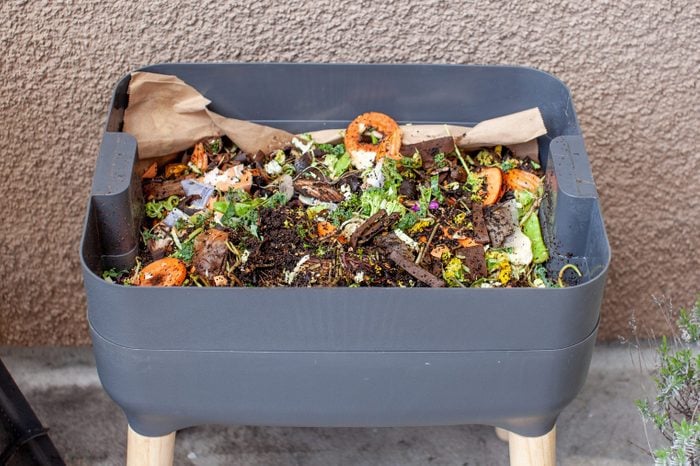
Adding them to your compost pile
This may not come as a total surprise, but you may not know exactly how to use coffee grounds in the garden—or even how to make compost. “Used coffee grounds are an excellent addition to compost because they are high in nitrogen, which is a key component of a healthy compost pile,” explains Chia-Ming Ro, garden consultant and owner of Coastal Homestead in Los Angeles. “They help to balance out the carbon-rich materials in compost, such as leaves and paper.”
Pro tip: Coffee grounds and their paper filters can be added directly to a compost pile with other organic matter like eggshells, leaves, grass clippings, cardboard or paper to produce a well-balanced soil amendment that feeds trees, plants and flowers, says Lennick.
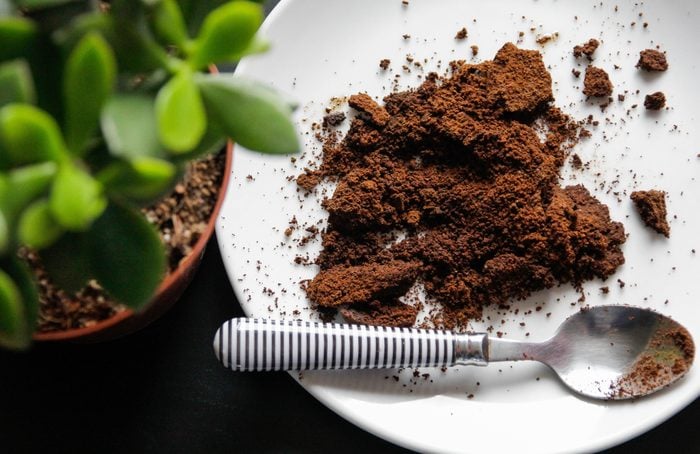
Using them as insect repellent
Want to repel unwelcome bugs in the garden? Coffee grounds can give you an assist. “There is some evidence to suggest that coffee grounds can repel certain insects, such as slugs, ants and mosquitoes,” says Ro. “The exact mechanism by which coffee grounds repel insects is not well understood, but it may have to do with the strong scent of the coffee, which can mask the scent of the plant and make it less attractive to insects.”
Sprinkle coffee grounds at the base of plants or where you’re having an infestation problem in the garden. If you’re wondering how to save money on your gardening habit, now you know you may be able to skip buying the bug spray.
Pro tip: Before you start sprinkling used coffee grounds in your garden, make sure your pets don’t have access to this area. Lennick says the caffeine in coffee is toxic to cats and dogs. “Never use them in an area where your pets might accidentally ingest them,” she says.
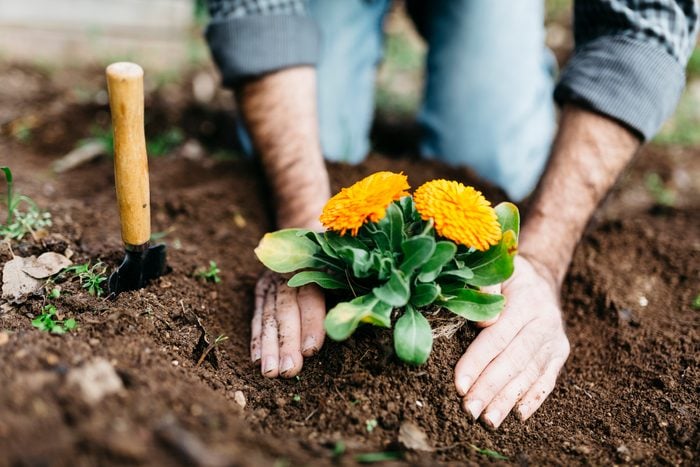
Making flowers bloom
“Coffee grounds can be beneficial for flowers because they provide a source of nitrogen, which is an essential nutrient for plant growth,” says Ro. But before you start adding spent coffee granules to your garden bed, you’ll want to look into which flowers may benefit, since it’s possible that used coffee grounds may change the soil composition.
Pro tip: Want to use coffee grounds in some flower beds? Ro suggests sprinkling them around the base of the plant and mixing them into soil. And while you’re puttering around out there, here’s some great intel about plant watering.
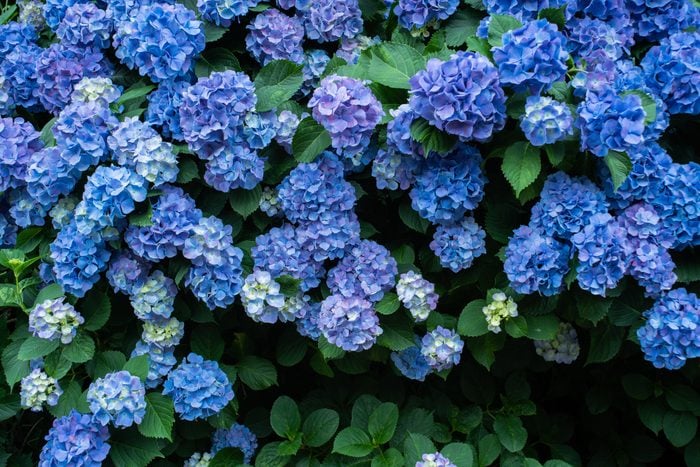
Creating blue hydrangeas
Love hydrangeas and want to have the blue flowers? Coffee grounds may be the key to that beautiful blue hue you’re after. “The flower color of many hydrangea species is dictated by the pH of the soil,” says Lennick. Coffee is considered acidic—but coffee grounds are often considered to have a neutral pH. There is a debate among gardeners about whether coffee grounds are the answer for modifying the soil composition to get the sought-after blue color. Now, if your hydrangeas have a powdery mildew on the leaves, it may be because the plant has a fungus.
Pro tip: You may want to do a test in your garden before adding coffee grounds to all your hydrangeas. “It’s important to note that the effect of coffee grounds on the color of hydrangeas can vary, depending on the soil composition and other factors,” shares Ro.
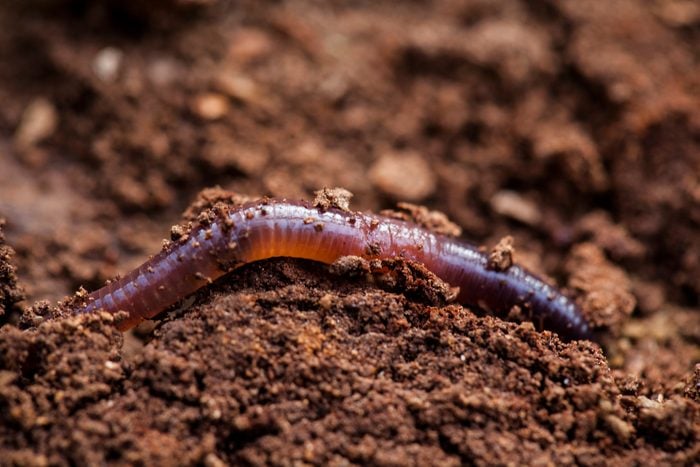
Providing food for beneficial worms
If you have a compost bin, you may also be interested in investing in a worm bin for vermicomposting. This is where you feed your produce scraps to your “pet” worms, who eat and break down different leftover veggies and fruit. This leaves you with rich, natural fertilizer. “Worms can benefit from coffee grounds because they provide a source of nitrogen and can help to increase the nutrient content of the vermicompost,” says Ro. Plus, coffee grounds can help increase the moisture-holding capacity of the vermicompost, she adds.
Pro tip: Before you start tossing your coffee grounds into your worm bin each morning, opt for moderation. Ro says it’s important to maintain a balance in there. Too much of one ingredient can affect the composition of the compost and the health of the worms.
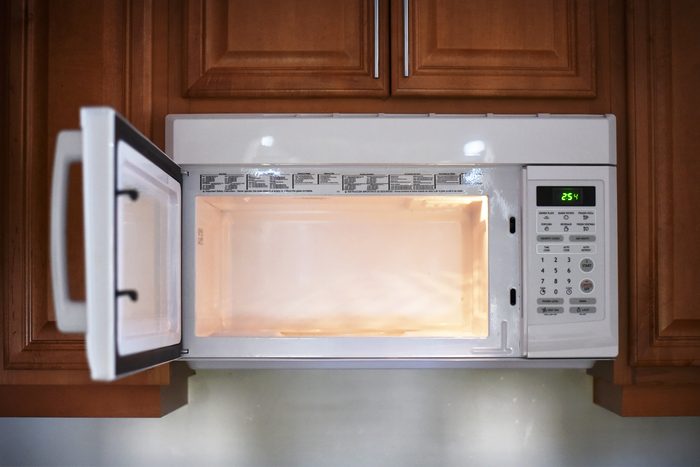
Deodorizing the microwave
If these appliances have taken on an odor, used coffee grounds can help. “Coffee grounds can be used to clean and deodorize stinky microwaves,” says Lennick. “It’s a safe, effective and free way to clean.” Another unexpected household item for cleaning? You’ll probably be surprised by all these uses for salt.
Pro tip: Cleaning with used coffee grounds is simple and straightforward. “Apply a small amount of coffee grounds with a damp cloth and then wipe clean a few minutes later,” says Lennick.
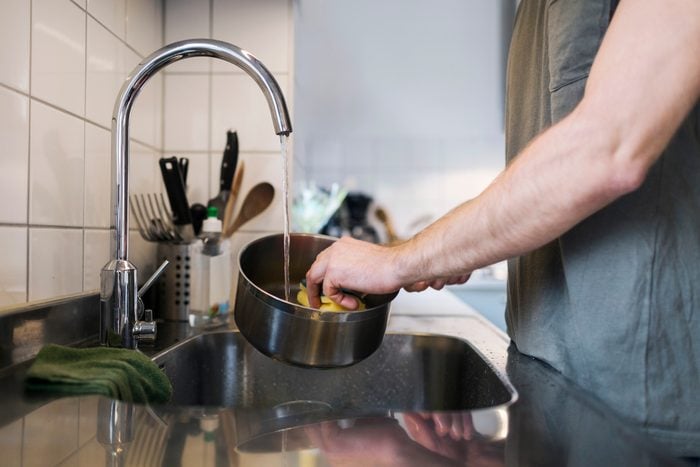
Scrubbing pots and pans
If you have tough, hard-to-remove stains caked on your pots or pans, this is one of the handiest uses for used coffee grounds. “The abrasive nature of coffee grounds makes them useful for scrubbing stuck food from pots, pans, grills and griddles,” says Lennick. Another great eco-friendly cleaner? Vinegar. Here are all the uses for vinegar you may not know about.
Pro tip: Sprinkle the coffee grounds directly onto the stain and then start scrubbing. Certain types of material or surfaces should be avoided. “Do not use it on porous surfaces, as it may cause stains,” Lennick says
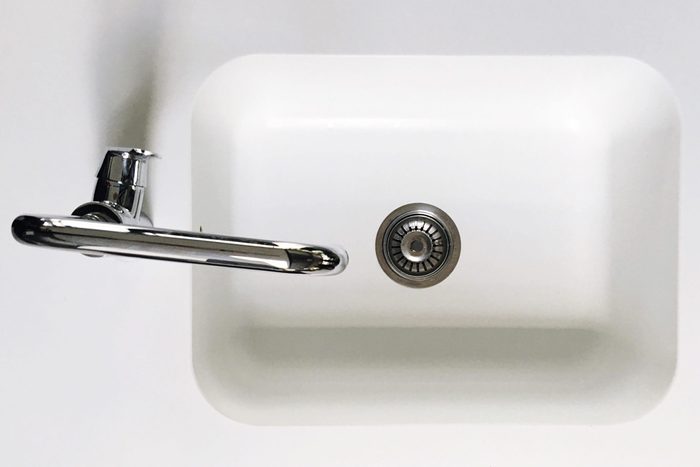
Cleaning the kitchen sink
If you notice that your kitchen sink needs a good scrub, and you want to avoid harsh chemicals, used coffee grounds may just be your answer. “Spent grounds can also be used to clean your kitchen sink instead of chalky products that may leave behind a white film,” explains Stacy Savage, founder & CEO of Zero Waste Strategies. “This also reduces the levels of toxicity in your home or office kitchenette areas, as your cleaning habits start to shift away from industrial-grade products.”
Pro tip: Sprinkle coffee grounds in the sink, and then scrub just as you would using another cleaner. Your sink should be shining in no time.
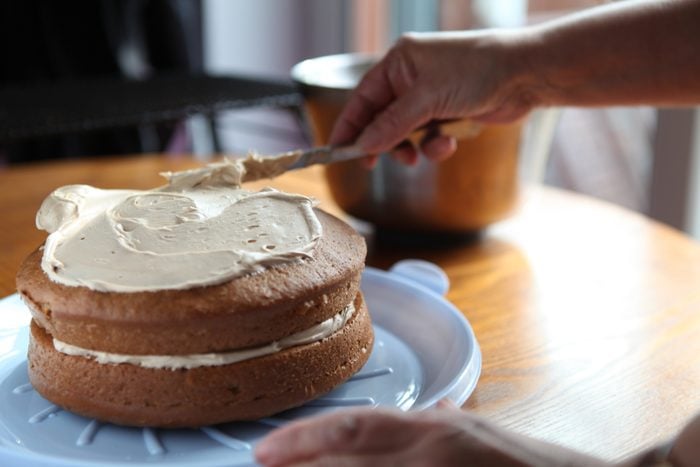
Flavoring baked goods
One wonderful use for coffee grounds that you may not have considered is baking. “Coffee grounds can be used as an ingredient in baked goods like cookies, muffins, scones or even granola to add a delicious coffee flavor,” says Lennick. “They are especially good in brownies, as they complement chocolate and deepen the rich cocoa flavor.”
Pro tip: Use that morning’s coffee grounds the same day you bake. “Fresher is better,” says Lennick. You may need to modify the recipe to account for more liquid. “If your grounds are very wet, you may need to slightly reduce the liquid content of the recipe to accommodate the additional moisture.”
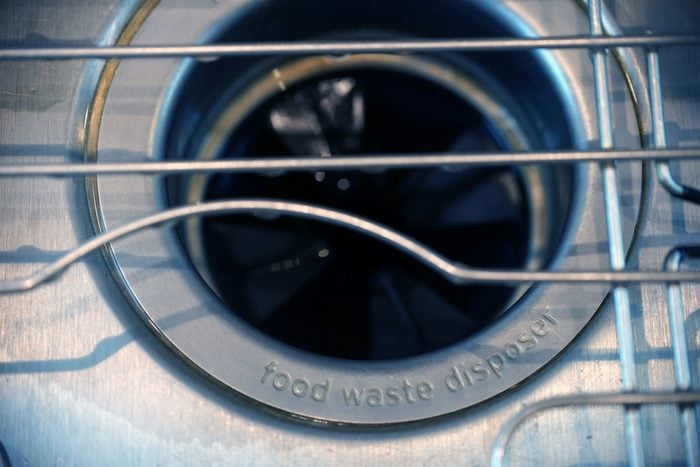
Freshening your garbage disposal
Want to neutralize odors coming from the kitchen drain and want another option aside from your old go-to baking soda? Yup, grab those used coffee grounds. “Coffee grounds naturally trap odors,” says Lennick.
Pro tip: “Put some used coffee grounds down the drain and run the grinder for about 30 seconds to clean the inside of the mechanism,” says Savage.
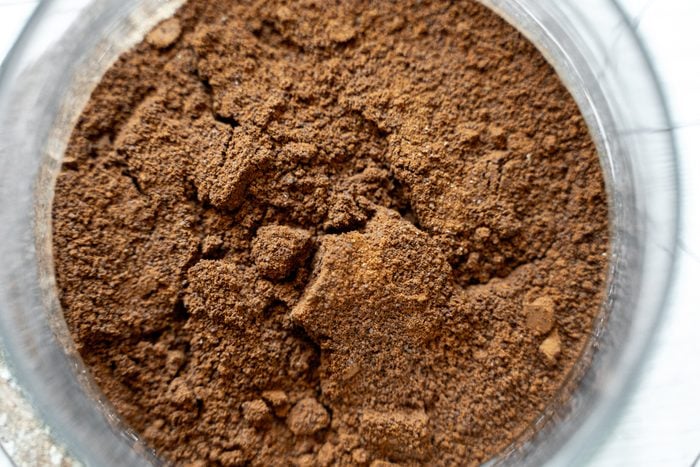
Dyeing clothes
Ever spilled coffee on your favorite white shirt and then spent a ton of time trying to get the spot out? Coffee stains easily, but it also makes a wonderful natural dye for cotton, linen, silk—and even paper. The process is easy and simple too.
Pro tip: “Just take old coffee grounds, steep them in hot water and place lighter-colored fabrics and fibers into the solution for dyeing,” says Savage. “Hang-dry to allow the dye to set.”
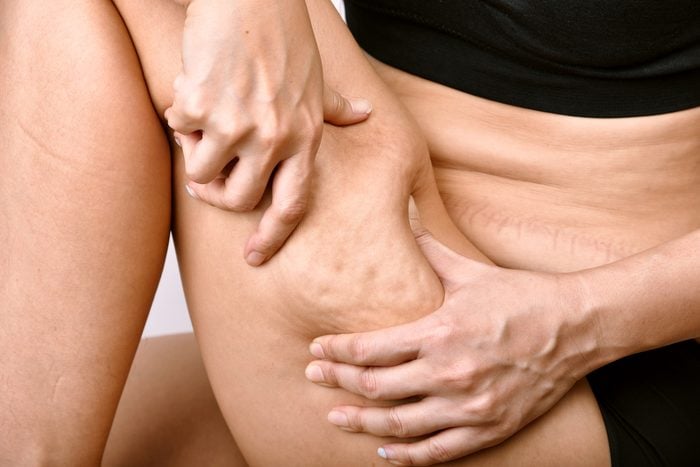
Minimizing cellulite
If you’re looking for a natural approach to minimizing cellulite, used coffee grounds could be worth a shot. Coffee grounds contain caffeine, which has been shown to help with cellulite. “Some people believe that the caffeine in coffee grounds may help reduce the appearance of cellulite when applied topically,” says Savage.
Pro tip: Combine coffee grounds either with water or an oil, such as coconut oil, and rub onto an area affected by cellulite, for 10 minutes, two times a week.
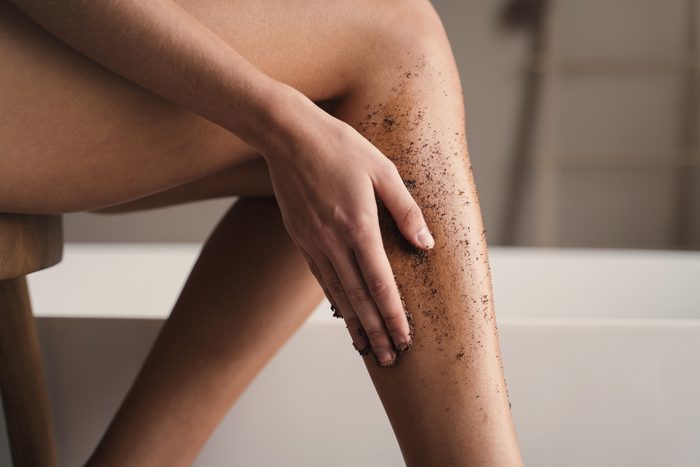
Exfoliating your skin
The gritty and coarse texture of coffee granules makes them wonderful as a skin scrubber. Exfoliating keeps skin glowing and healthy, because it’s beneficial to remove dead skin cells and stimulate the skin. Plus, the caffeine in coffee grounds can help stimulate blood flow, which adds a natural glow to the skin.
Pro tip: “Coffee grounds can be mixed with coconut oil or honey to create an exfoliating scrub that may help remove dead skin cells and improve circulation,” says Savage.
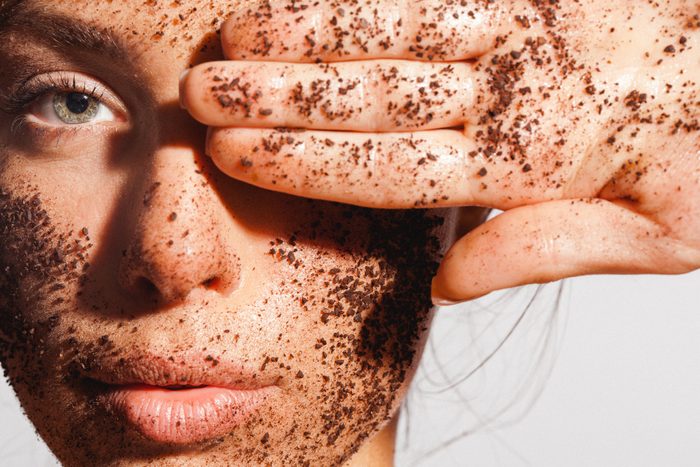
Making a face mask or hair scrub
Shampoo can leave buildup and residue in your hair after continued use. Giving your scalp a massage while exfoliating with coffee grounds can help remove that and help stimulate hair growth—thanks to caffeine, which is known to help with hair growth as well as stimulate blood flow. According to Savage, “Coffee grounds can be used as a hair mask to potentially stimulate hair growth and add shine.”
Pro tip: Here’s the formula you need: “A tablespoon of coffee grounds mixed with an equal amount of olive oil or coconut oil creates a moisturizing face mask or stimulating scalp scrub,” says Lennick.
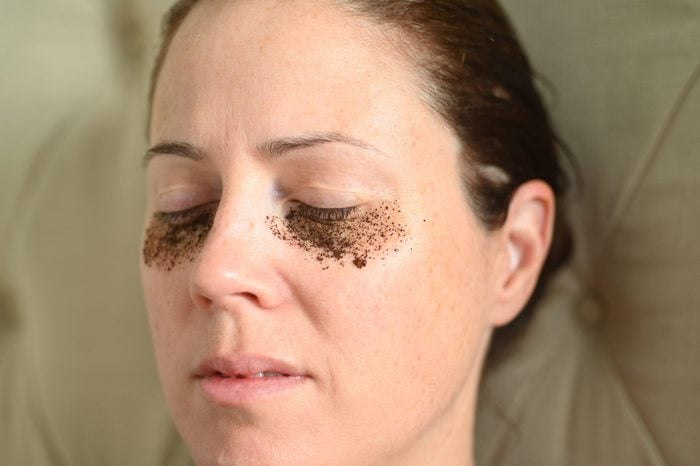
Minimizing under-eye circles
Coffee grounds are high in antioxidants, which help fight free radicals and are also beneficial for the skin. Caffeine not only has anti-inflammatory properties, it also can stimulate blood circulation when applied below the eyes to minimize dark circles and puffiness. “Some people use coffee grounds as an eye mask to potentially reduce puffiness and dark circles,” shares Savage.
Pro tip: Mix coconut oil or water with used coffee grounds, gently rub below your eyes for around 10 minutes and then rinse. Consider making this part of your daily beauty-care routine.
Sources:
- Natalie Lennick, environmental activist and founder of zero-waste hair-care brand Green Ablutions
- Chia-Ming Ro, garden consultant and owner of Coastal Homestead in Los Angeles
- Stacy Savage, founder & CEO of Zero Waste Strategies
